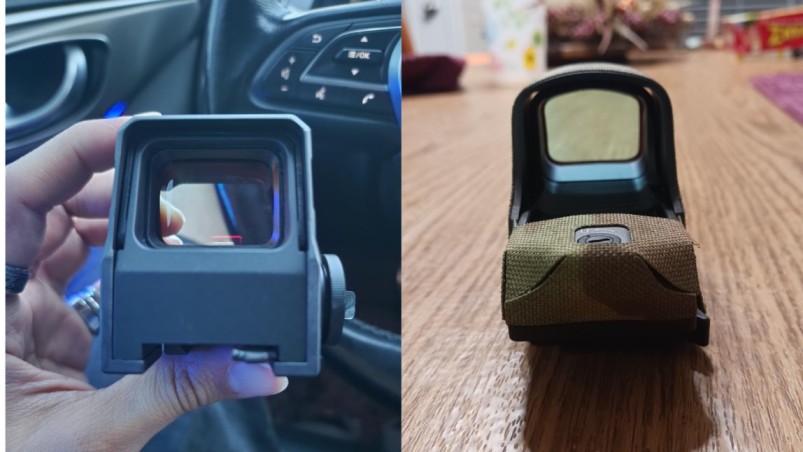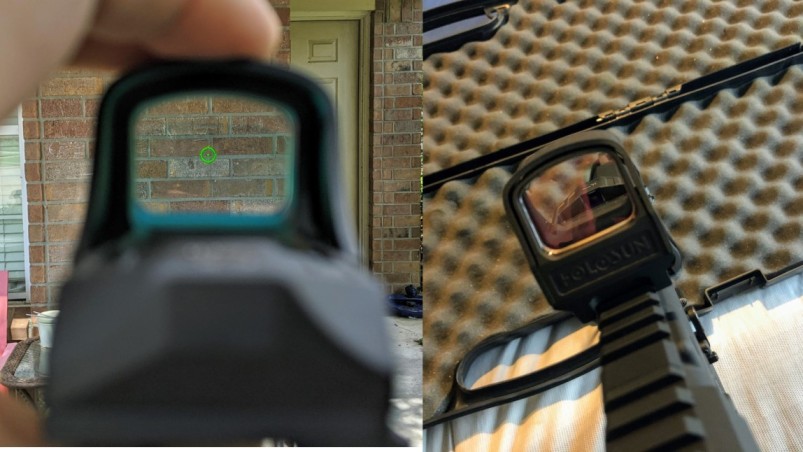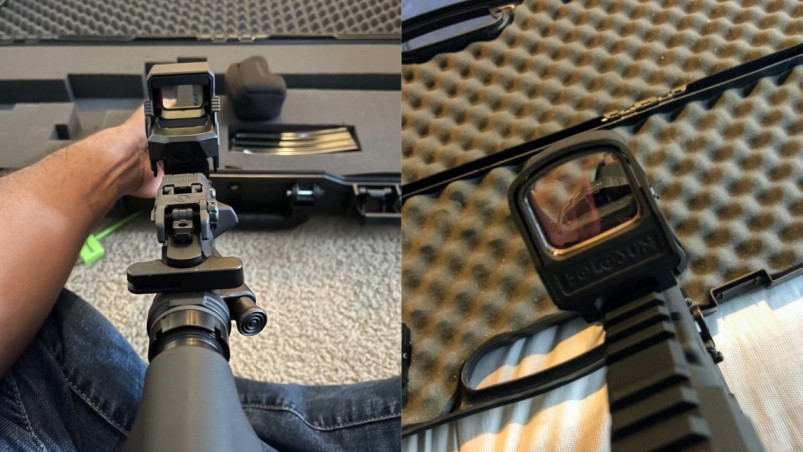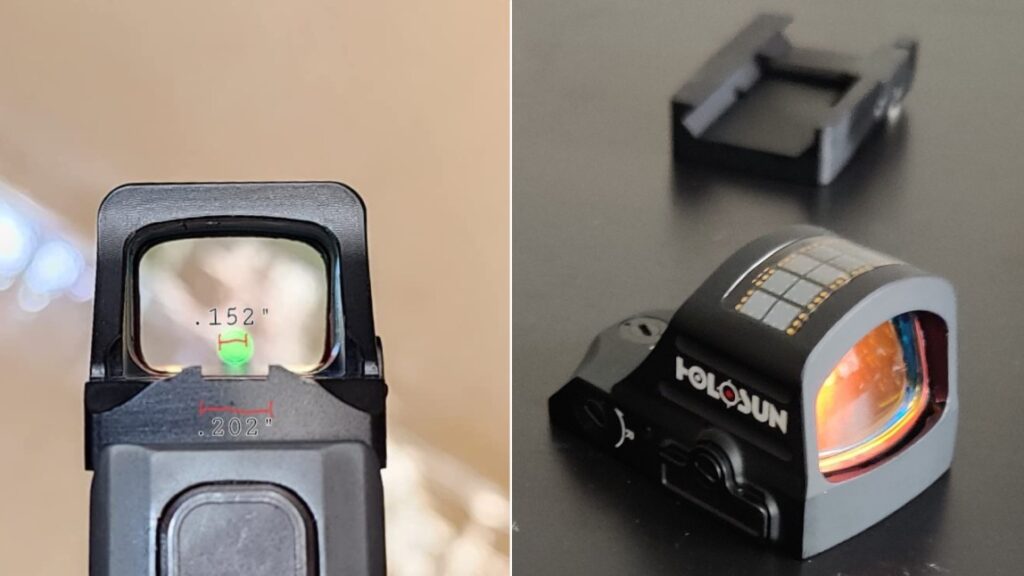I Tested And Differentiate The Holographic Sight Vs Red Dot In 2025

Holographic sights and red dot sights are two popular optic choices aimed at improving accuracy and rate of fire for shooters across various disciplines.
Both find widespread adoption among hunters, armed forces personnel, and competitive marksmen due to their distinctions in design and functionality.
Holographic sights employ laser technology to dynamically generate a virtual reticle upon a specialized film plate within the scope.
Alternatively, red dot sights utilize light-emitting diodes to project single-point aiming referents onto integrated lenses.
Gaining deeper insight into their divergent underlying mechanisms can significantly assist shooters in identifying the attachment option best matching their individual performance needs on the range or field.
Key specifications
A Detailed Look at Key Technical Specifications
Projection Innovation
Holographic sights leverage laser innovation, projecting a hologram onto an internal film to generate a crisp reticle image appearing to float before the target.
Even with an imperfect eye position, the reticle stays clear.
Red dot alternatives utilize efficient LED technology to illuminate a basic dot onto a curved lens for aiming.
While compact and simple, red dots lack holographic sights’ detailed reticle potential.
Parallax Precision
Holographic sights virtually eliminate parallax errors, keeping the reticle locked on target regardless of eye position or angle. This ensures pinpoint precision, especially under pressure.
While red dots minimize parallax, extreme viewing angles may cause a slight apparent shift, usually insignificant but potentially impacting long-range shots. For most, parallax presents no problem.
Battery Endurance
The laser technology consumes more power, resulting in shorter typical life between 500-1000 hours. Frequent battery swapping may be necessary for extensive use.
LED efficiency grants significantly longer life for red dots, often over 50,000 hours. This makes them well-suited to dependable long-term service without bothersome battery changes.
Weight and Scale
Internal complexity makes holographic sights generally heavier and bulkier, though adding durability. This bulk may be undesirable for lightweight applications.
Compact and lightweight profile favors red dots for mounting on handguns, ARs, shotguns, or long carries. Their discreet sizes suit a range of platforms.
Reticle Customization
Holographic sights offer advanced reticle options including patterns, ballistic marks, and range estimates.
Such versatility benefits tactical and hunting uses across landscapes.
Red dots typically limit reticles to a basic dot, adequate for competition but lacking holographic sights’ functional customization.
Cost Comparison
Given their sophisticated features, holographic sights command higher prices beginning around $400. This premium may dissuade budget-focused shooters.
Red dots provide quality, affordable options between $100-300, making them accessible for newcomers or as economical performing alternatives.
Holographic Sight Vs Red Dot

Highlights
- Reticle Technology
- Parallax Accuracy
- Battery Life
- Weight and Size
- Reticle Customization
Both holographic and red dot sights each offer their own benefits, making one better suited for specific uses than the other.
As an avid hunter, I’ve found holographic sights tremendously helpful in my excursions.
Their laser-projected reticle delivers sharp target acquisition even in dim conditions, and the capability to incorporate complex elements like ranging data or bullet drop compensation renders them exceptionally tailored for the fluctuating situations encountered in the field.
Moreover, the near lack of parallax in a holographic sight’s amplifies accuracy during rapid sighting.
That said, their higher price point and shorter battery life could hinder more prolonged trips afield.
In contrast, red dot sights present a cost-effective and adaptable choice for shooters prioritizing simplicity above all else.
Compact and lightweight, these sights are superb for firearms used in fast-paced sports like 3-Gun or casual plinking.
While testing models from Vortex and Leupold, I really valued the durability and extended runtime of red dot sights, making them very suitable for prolonged shooting sessions.
However, their small amount of parallax and basic reticle design may not satisfy for advanced tactical or hunting applications where absolute precision is paramount.
As an enthusiast who prizes performance, reliability and value, the right pick often comes down to the task at hand.
For close encounters or swift engagements, a red dot’s ease of use and lasting battery make it more practical.
At the same time, holographic sights excel in situations necessitating precision, advanced graphical aids, and adaptability in challenging conditions.
Thoughts From A Neighbors
Having tested both holographic and red dot sights extensively over many years on the range and in tactical situations.
I have accumulated substantial first-hand experience with their strengths and limitations under diverse conditions.
Holographic sights have proven remarkably effective for precision applications thanks to their virtually parallax-free reticle which maintains its integrity regardless of eye position.
Their advanced reticle designs incorporating rangefinding and ballistic information transform them into versatile tools for long-range shooting.
However, their increased weight and need for periodic battery changes are worth considering, especially under prolonged use or when portability is paramount.
Red dot sights, offer a more affordable and simple alternative while retaining strong performance appropriate for most self-defense and sporting applications.
Their basic red dot reticle allows rapid target engagement at close and medium distances, needs which they fulfill admirably.
Even more impressively, their LED technology routinely powers the reticle for tens of thousands of hours on a single battery, conferring unparalleled reliability.
Naturally, the absence of additional ballistic features means red dot sights are best applied to casual use rather than extended tactical situations.
Compact size and lightweight construction also make them a flexible choice for mounting across multiple firearm platforms.
Conclusion
The holographic and red dot sights each have their own strengths that suit varying needs.
Holographic sights excel at precision shooting with advanced reticle options, handling difficult lighting situations.
However, their complexity comes with a higher price tag. Red dot sights take a simpler approach with basic dot reticles, affordable prices, and long-lasting batteries, making them a good choice for casual use.
Having extensively tested optics in the past, I’ve found the best option depends on intended application.
Whether plinking at the range, hunting game, or engaging targets with razor-sharp focus, considering use case, funds, and individual shooting style helps determine the optimal sighting system.


